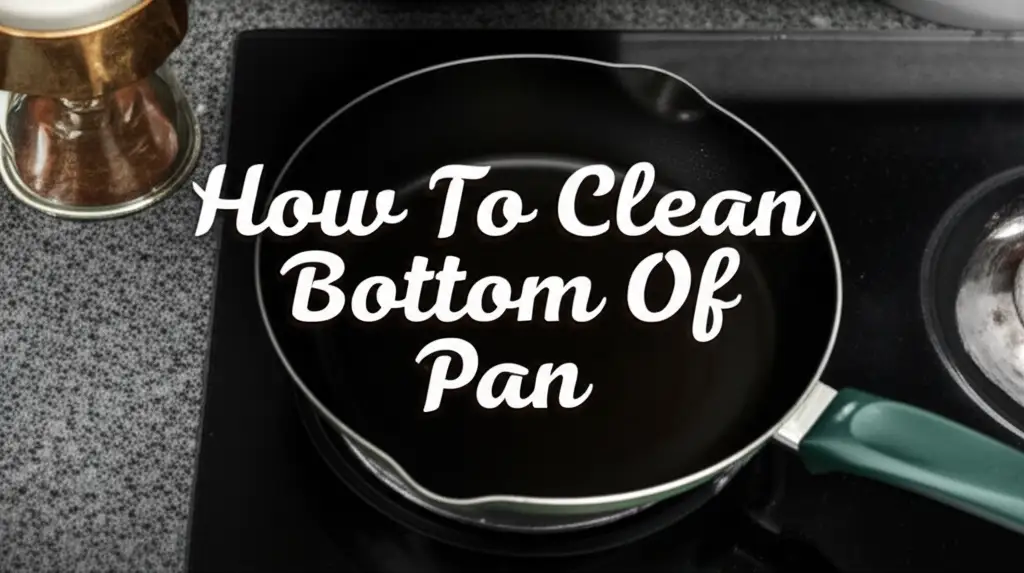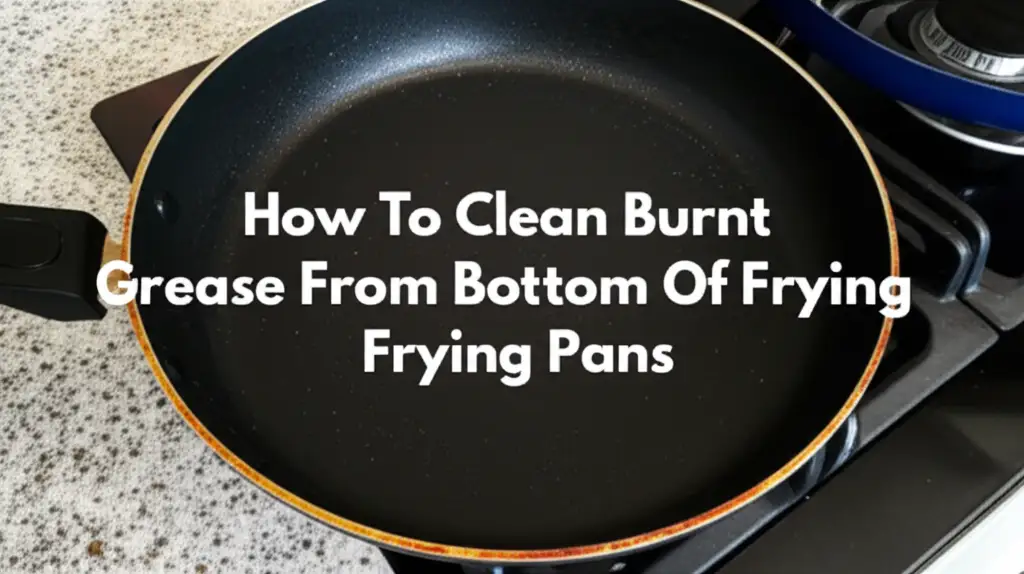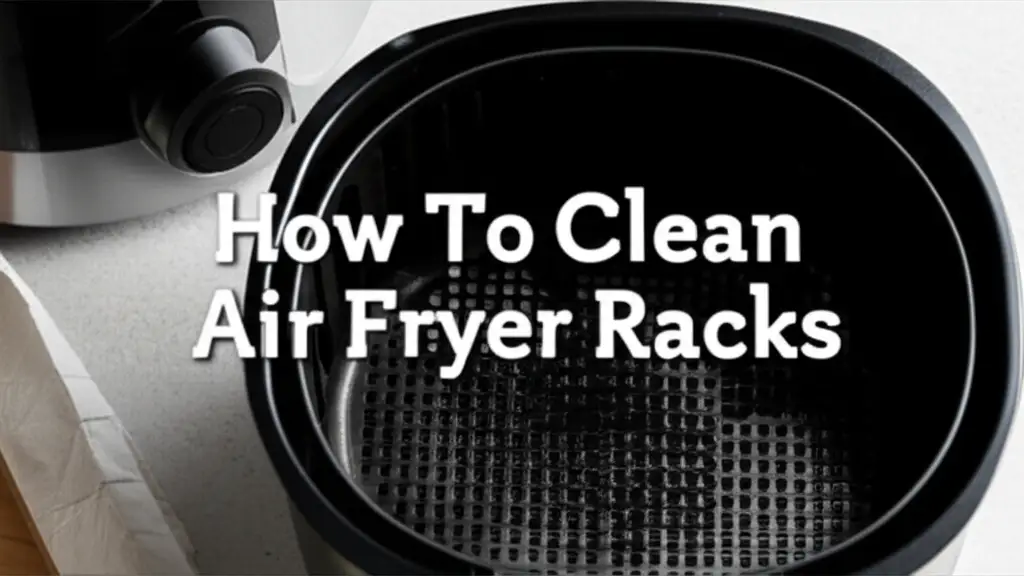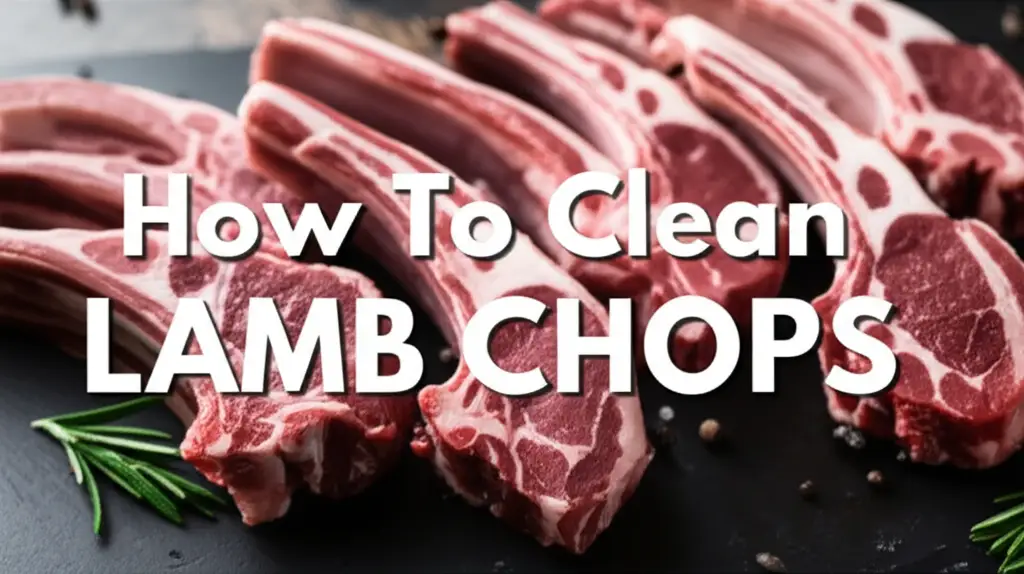· Kitchen Cleaning · 22 min read
How To Clean Up Cooking Oil
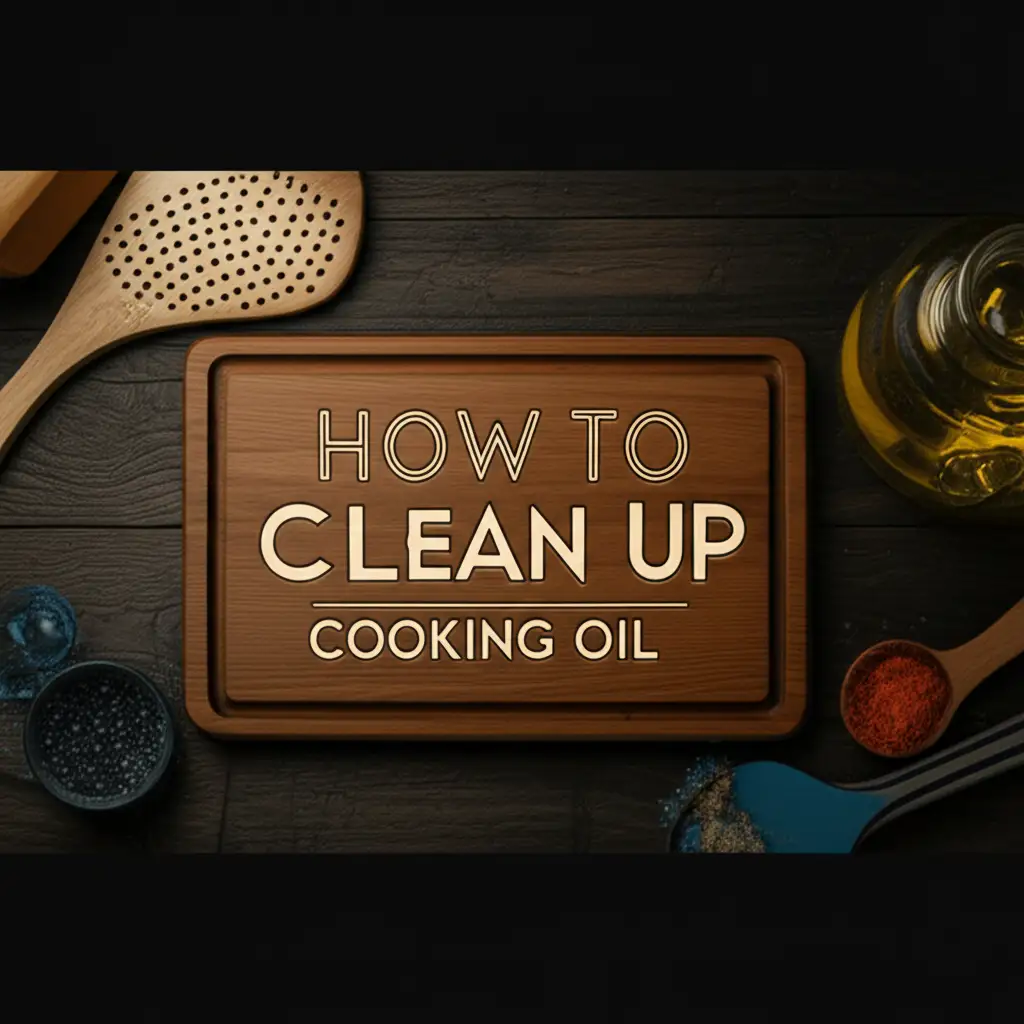
Clean Up Cooking Oil Spills: Your Complete Guide
We all love cooking, but sometimes, a little accident happens. A splash of oil, a dropped bottle, or an overflowing pan can leave a greasy mess. Knowing how to clean up cooking oil quickly and effectively makes a big difference. These spills are not just ugly; they can also be safety hazards, making floors slippery.
This guide helps you tackle any cooking oil mess. We cover immediate response steps and tell you about the best absorbent materials. You will learn specific methods for different surfaces, including floors, countertops, and even fabrics. We also discuss how to properly dispose of used oil. Our tips aim to make your kitchen safer and cleaner. Get ready to conquer those greasy challenges with ease.
Takeaway
- Act fast to contain oil spills.
- Use absorbent materials like flour or cat litter first.
- Clean surfaces with dish soap and degreasers.
- Treat fabric stains with dish soap or rubbing alcohol.
- Dispose of cooking oil responsibly; never pour it down the drain.
A cooking oil spill needs quick action. First, absorb as much oil as possible using materials like flour, cornstarch, or cat litter. Then, clean the remaining residue with a strong degreasing agent like dish soap and hot water, scrubbing the affected area thoroughly. Finish by rinsing and drying the surface.
Act Fast: Your First Steps for Any Oil Spill
A cooking oil spill can feel overwhelming, but a quick response makes the cleanup much easier. The first moments after a spill are the most important. Immediate action helps contain the mess and prevents it from spreading further. We want to stop the oil before it causes more problems.
Your safety is the top priority when dealing with any spill. Cooking oil can make surfaces very slippery. This creates a fall hazard for anyone walking nearby. Make sure to warn others in the area about the spill. You might even place a towel or a sign to mark the wet spot.
Before you start cleaning, gather the right supplies. You will need absorbent materials. These can include paper towels, old rags, or even an old t-shirt. A dustpan and broom or a vacuum cleaner might be useful for scooping up solid absorbents later. Having your tools ready saves time and effort.
- Prioritize Safety First:
- Immediately warn anyone nearby about the slippery surface.
- If the spill is large, place an old towel or a “wet floor” sign to mark the area.
- Avoid walking through the oil spill yourself, if possible.
- Contain the Spill:
- Try to create a barrier around the oil. You can use flour, baking soda, or even paper towels for this.
- This barrier stops the oil from spreading to clean areas. It makes the cleanup process more manageable.
- Gather Necessary Supplies:
- Have plenty of paper towels or old rags on hand.
- Prepare absorbent powders like flour, cornstarch, or baking soda.
- Keep a dustpan and broom ready for scooping up saturated absorbents.
Remember, the goal is to prevent the oil from spreading. The faster you act, the smaller the area you will need to clean. A quick response protects both your home and the people in it.
Absorbing the Oil: Best Materials to Use
Once you have contained the spill, the next critical step is to absorb as much of the cooking oil as possible. Do not just wipe it with a wet cloth; this will spread the oil and make it worse. We need materials that can soak up the oil without leaving too much residue. These simple household items work wonders.
Flour is a common kitchen ingredient that is excellent for absorbing oil. Simply sprinkle a generous amount directly onto the oil spill. Make sure you cover the entire area thoroughly. The flour will clump together with the oil, making it easier to sweep up.
Cornstarch works similarly to flour. It is another highly effective absorbent that you likely have in your pantry. Apply cornstarch over the oil and let it sit for a few minutes. It will draw the oil into its fine particles. This helps lift the grease away from the surface.
Cat litter, especially the clay-based kind, is incredibly absorbent. If you have some available, pour a thick layer over the cooking oil spill. Let it sit for at least 15-20 minutes, or even longer for larger spills. The litter will soak up a significant amount of oil, turning into a solid mass. You can then sweep it up easily.
Baking soda is another versatile household cleaner that can absorb oil. Sprinkle a thick layer of baking soda over the spill. Let it sit for about 15 minutes. It helps to neutralize odors as it absorbs the oil. This makes it a good choice for smaller spills.
Sawdust or sand can also be effective absorbents if you have them. These materials are often used for larger spills outside the home. For kitchen spills, flour, cornstarch, or cat litter are usually more convenient and just as effective. They are easy to sweep up afterward.
- How to Use Absorbents:
- Generously Apply: Pour or sprinkle your chosen absorbent material directly onto the oil spill. Ensure the entire oily area is covered with a thick layer.
- Allow Time to Absorb: Let the material sit for at least 10-20 minutes. For larger or older spills, allow more time, even up to an hour. The absorbent needs time to soak up the oil thoroughly.
- Sweep or Scoop Up: Once the absorbent has clumped together with the oil, use a dustpan and broom or a sturdy scraper to carefully scoop up the solid mixture. Place it in a plastic bag.
- Dispose Properly: Tie the bag securely and dispose of it in your trash bin. Never rinse these absorbents down the drain, as the oil will still clog pipes.
- Initial Wipe Down: After removing the bulk of the oil, use paper towels or old rags to gently wipe up any remaining residue. This prepares the surface for actual cleaning.
By using these absorbent materials, you remove most of the oil before washing. This makes the final cleaning steps much simpler and more effective. You also prevent the oil from spreading or clogging your drains.
Cleaning Hard Surfaces: Floors and Countertops
After absorbing the bulk of the cooking oil, you will still have a greasy film left behind. This residue needs a proper cleaning to make surfaces safe and spotless again. Hard surfaces like kitchen floors and countertops are common places for oil spills. We need strong degreasing agents to tackle this.
Dish soap is your best friend when cleaning up cooking oil residue. Its grease-cutting power is unmatched. For floors, mix a generous amount of dish soap with hot water in a bucket. The hotter the water, the better it dissolves grease. Mop the affected area thoroughly, paying extra attention to the greasy spots.
For countertops and other non-porous surfaces, apply a few drops of dish soap directly onto the greasy area. Use a damp cloth or sponge to scrub it vigorously. The soap will break down the oil. Rinse the cloth often in clean, hot water. Repeat until the surface feels clean and non-greasy.
Commercial degreasers are also very effective, especially for stubborn oil stains. Read the product instructions carefully. Some degreasers need dilution, while others are ready to use. Spray the degreaser onto the oily film and let it sit for the recommended time. Then, wipe it away with a clean cloth. For tough grease build-up in ovens, consider our guide on how to clean oil out of oven.
Vinegar can be a natural alternative for light grease residue. Mix equal parts white vinegar and warm water in a spray bottle. Spray the solution onto the greasy surface. Let it sit for a few minutes. Then wipe it clean with a damp cloth. Vinegar also helps to remove odors.
For any remaining stickiness, a final wipe with rubbing alcohol can help. Apply a small amount of rubbing alcohol to a clean cloth. Wipe down the surface quickly. Rubbing alcohol evaporates fast and leaves surfaces streak-free. Always test on an inconspicuous area first, especially on painted surfaces. For general oil spills on floors, you might also find tips on how to clean oil spill on floor helpful.
- Steps for Cleaning Hard Surfaces:
- Prepare Cleaning Solution: Mix a good amount of dish soap with hot water in a bucket or spray bottle. For tougher grease, use a commercial degreaser as directed.
- Apply and Scrub: For floors, mop the area thoroughly. For countertops, apply the solution directly and scrub with a sponge or brush. Focus on the greasy spots.
- Rinse Thoroughly: Use a clean cloth dampened with plain hot water to wipe away all soap residue. Change the rinse water often to prevent reapplying grease.
- Dry the Surface: Dry the cleaned area completely with a clean, dry towel. This prevents water spots and ensures no slipperiness remains.
- Final Polish (Optional): If a slight film remains, a quick wipe with a clean cloth dampened with rubbing alcohol can provide a streak-free finish.
Cleaning hard surfaces after an oil spill takes some effort. With the right products and techniques, your floors and countertops will be clean and safe again.
Tackling Oil Stains on Fabrics and Carpets
Cooking oil spills do not always land on hard surfaces. Sometimes, they splash onto clothes, carpets, or upholstery. These fabric stains need a different approach than hard surfaces. Acting quickly is key to preventing the oil from setting in permanently. We aim to lift the oil out of the fabric fibers.
For fresh oil stains on clothing, start by blotting the excess oil with a paper towel. Do not rub, as this can push the oil deeper into the fabric. Then, sprinkle a generous amount of an absorbent powder directly onto the stain. Use cornstarch, baking soda, or even talcum powder. Let it sit for at least 30 minutes, or longer for large stains. The powder will draw out the oil.
After the absorbent has done its job, gently brush it off. Now, apply a small amount of liquid dish soap directly onto the stain. Work it into the fabric with your fingers or a soft brush. Let the dish soap sit for 5-10 minutes. Dish soap is excellent at breaking down grease.
For stubborn fabric stains, rubbing alcohol can be very effective. After applying dish soap, you can dab the stain with a cloth soaked in rubbing alcohol. Test a hidden area of the fabric first to ensure no color fading occurs. Rubbing alcohol helps to dissolve the oil without damaging many fabrics.
Carpets and upholstery also benefit from a similar method. First, blot as much oil as you can. Then, apply an absorbent powder like baking soda or cornstarch. Let it sit for a few hours or even overnight. Vacuum up the powder thoroughly. Then, apply a small amount of dish soap solution (dish soap mixed with a little water) to a clean cloth. Gently blot the stain. Rinse by blotting with a clean, damp cloth. Repeat until the stain is gone. For general spills, you may find how to clean up spilled oil useful.
- Steps for Fabric and Carpet Stains:
- Blot Excess Oil: Use paper towels to gently blot, not rub, as much liquid oil as possible from the fabric or carpet.
- Apply Absorbent Powder: Sprinkle a thick layer of cornstarch, baking soda, or talcum powder directly over the oil stain. Let it sit for at least 30 minutes for clothes, or several hours for carpets.
- Brush/Vacuum Away Powder: Gently brush off the powder from clothing or vacuum it from carpets.
- Apply Dish Soap: Put a few drops of liquid dish soap directly onto the stain. Gently rub it in with your fingers or a soft brush.
- Wash (Clothing): For clothing, wash the item in the hottest water safe for the fabric. Check the stain before drying; if it is still there, repeat the process. Do not put it in the dryer, as heat can set the stain.
- Blot and Rinse (Carpets/Upholstery): For carpets, blot the soapy area with a clean, damp cloth. Then blot with a cloth dampened with plain water to rinse. Repeat until no soap or stain remains.
- Consider Rubbing Alcohol: For very tough stains, after the dish soap step, you can try dabbing with a cloth soaked in rubbing alcohol. Always spot test first.
Treating oil stains on fabrics requires patience and the right technique. Do not give up if the first attempt does not remove the stain completely. Repeat the steps as needed.
Proper Disposal of Used Cooking Oil
Cleaning up the spill is only half the battle; knowing how to properly dispose of the cooking oil is equally important. Many people make the mistake of pouring used cooking oil down the drain. This can lead to serious problems for your plumbing and the environment. We want to avoid these issues.
Never pour cooking oil, grease, or fat down your kitchen sink drain. As the oil cools, it solidifies. This sticky substance clings to the inside of your pipes. Over time, it builds up and creates blockages. These blockages can lead to slow drains, backups, and expensive plumbing repairs. Fats, oils, and grease (FOG) are a major cause of sewer overflows.
Instead of the drain, let the used cooking oil cool completely. Once it is cool, pour it into a sturdy, non-recyclable container with a lid. Good options include old milk cartons, plastic food containers with screw-on tops, or empty tin cans. Make sure the container is sealed tightly to prevent leaks.
Once sealed, throw the container of used cooking oil directly into your trash bin. This is the simplest and most common method for household disposal. The oil will go to a landfill, where it is contained. This keeps it out of your pipes and waterways.
For large quantities of oil, such as from deep-frying, some communities have recycling programs. Check with your local waste management facility or recycling center. They might have specific drop-off locations for used cooking oil. Recycling programs can turn the oil into biodiesel or other useful products. You might also find information on how to clean cooking grease to reuse, if you prefer that option for certain types of grease.
- Why Not Down the Drain?
- Clogged Pipes: Oil solidifies and sticks to pipes, creating blockages.
- Sewer Backups: Major blockages in sewer lines can cause raw sewage to back up into homes or streets.
- Environmental Damage: Oil can harm wildlife and ecosystems if it enters natural waterways.
- Safe Disposal Methods:
- Cool and Contain: Let the oil cool completely. Pour it into a sealed, non-recyclable container (e.g., milk carton, plastic jar, tin can).
- Trash It: Place the sealed container in your regular household trash.
- Recycle (If Available): Check with your local waste management for cooking oil recycling drop-off points. Some places convert oil into biodiesel.
- Compost (Certain Types): Small amounts of non-animal-based cooking oil (like vegetable oil) can sometimes be composted, but check local composting guidelines first. Never compost animal fats.
Properly disposing of used cooking oil protects your home and the environment. It is a simple habit that makes a big difference.
Preventing Future Cooking Oil Messes
The best way to deal with cooking oil spills is to prevent them from happening in the first place. A few simple habits and precautions can greatly reduce the chances of a greasy mess. We want to keep your kitchen clean and safe from spills.
Always use appropriate cookware for the amount of oil you are using. Do not overfill pots or pans, especially when deep-frying. Leave enough space at the top to prevent oil from bubbling over or splashing out. A pan that is too full is an accident waiting to happen.
When frying, consider using a splatter screen. These mesh covers sit over your pan. They allow steam to escape while trapping oil splatters. This keeps your stovetop and surrounding areas cleaner. It also protects you from hot oil burns. Splatter screens are inexpensive and highly effective.
Keep children and pets away from the cooking area, especially when hot oil is present. A sudden bump or distraction can lead to a spill. Establish a clear safety zone around your stove. This helps prevent accidental knocks and splashes.
Always use stable cooking surfaces. Make sure your pots and pans sit flat and securely on the burners. Avoid placing hot oil on the very edge of the counter where it could be easily knocked over. Use back burners if possible, especially when cooking with small children around.
Clean up small drips immediately. A tiny drop of oil can become a slippery spot or attract more dirt over time. Wiping up spills as they happen prevents them from growing into larger, harder-to-clean messes. Keep a roll of paper towels handy for this purpose.
Consider using less oil when cooking if possible. Explore alternative cooking methods like baking, grilling, or air frying. These methods often require less oil, reducing the risk of spills altogether. Every little bit of prevention helps.
- Top Prevention Tips:
- Do Not Overfill: Leave ample space when pouring oil into pots or pans.
- Use Splatter Screens: Cover frying pans with a mesh screen to contain splatters.
- Designate a Safety Zone: Keep children and pets away from hot cooking areas.
- Ensure Stability: Place pots and pans securely on burners or stable countertops.
- Clean As You Go: Wipe up small drips and splashes immediately to prevent buildup.
- Explore Alternatives: Consider cooking methods that use less oil.
- Store Oil Safely: Keep oil bottles in a stable, secure place to prevent them from being knocked over.
By adopting these preventative measures, you can enjoy cooking without the stress of constant oil cleanup. A little caution goes a long way in maintaining a clean and safe kitchen.
Deep Cleaning Greasy Kitchen Areas
Cooking oil spills are one thing, but over time, general cooking activities can lead to greasy buildup in your kitchen. This buildup makes surfaces sticky and harder to clean. It also attracts dust and grime. Deep cleaning these greasy areas helps keep your kitchen truly spotless.
Your stovetop is often the greasiest area. Regular wiping after each use helps, but deep cleaning is necessary. For ceramic or glass stovetops, use a non-abrasive cleaner designed for them. Apply the cleaner, let it sit, then scrub with a soft sponge. For gas stovetops, remove grates and burner caps. Wash them in hot, soapy water. Use a brush to scrub away burnt-on grease.
The range hood and its filters collect a lot of airborne grease. Remove the metal filters from your hood. Soak them in a sink filled with hot water and a strong degreasing dish soap. Let them soak for 30 minutes to an hour. Scrub with a brush to remove softened grease. Rinse them thoroughly and let them air dry. Wipe down the exterior of the range hood with a degreaser.
Backsplashes and walls near the stove can get greasy too. Mix warm water with a generous amount of dish soap or a multi-surface degreaser. Use a clean cloth or sponge to wipe down these surfaces. For stubborn grease, a paste of baking soda and water can be applied. Let it sit for a few minutes before scrubbing and wiping clean.
Kitchen cabinets, especially those above and next to the stove, accumulate a sticky film of grease and dust. For wooden cabinets, mix a few drops of dish soap with warm water. Dampen a soft cloth with this solution and gently wipe the cabinets. For laminate or painted cabinets, a stronger degreaser can be used, but always test in an inconspicuous area first. After cleaning, wipe with a clean, damp cloth to remove all soap residue, then dry thoroughly.
Floors around the cooking area also need attention. Even if you clean spills immediately, invisible grease can build up. Use a hot water and dish soap solution for mopping. For tough floor grease, a stronger floor cleaner with degreasing properties will work best. Ensure you rinse well to prevent sticky residue.
- Key Areas for Deep Cleaning Grease:
- Stovetop & Burners: Regular degreasing of grates, burners, and surface.
- Range Hood & Filters: Soaking and scrubbing filters, wiping down the exterior.
- Backsplashes & Walls: Wiping down with a degreasing solution.
- Kitchen Cabinets: Gently clean all surfaces, especially those near cooking zones.
- Floors: Regular mopping with hot, soapy water, or a specific floor degreaser.
Deep cleaning greasy kitchen areas makes your space feel fresh. It also prevents dirt from sticking to the surfaces. Make deep cleaning a regular part of your kitchen maintenance routine.
Dealing with Outdoor Oil Stains: Driveways and Patios
Cooking oil spills are not limited to the kitchen. Outdoor cooking, like grilling, can lead to grease stains on driveways, patios, or decks. These surfaces need different cleaning methods than indoor ones. The porous nature of concrete and pavers means oil can soak in deeply.
For fresh oil stains on concrete or pavers, act fast. First, try to blot up as much excess oil as possible with paper towels or old rags. Do not rub the oil around, as this will spread it further. The goal is to lift the liquid oil before it soaks in.
Next, cover the fresh stain with an absorbent material. Cat litter, sawdust, or even sand works well for outdoor surfaces. Pour a thick layer directly onto the stain. Let it sit for several hours, or even overnight, to absorb the oil. Then, sweep up the saturated absorbent material. For detailed steps on concrete, see how to clean engine oil off concrete.
For older or tougher stains on concrete, you will need a strong degreaser or specialized concrete cleaner. Apply the cleaner directly to the stain. You might need to scrub it with a stiff-bristled brush. Some cleaners require you to let them sit for a specific time before scrubbing and rinsing. Follow product instructions carefully.
A pressure washer can be highly effective for cleaning large oil stains on concrete or pavers. After applying a cleaner and letting it sit, use the pressure washer to blast away the oil and cleaner. Be careful not to use too high a pressure on softer surfaces like asphalt or some types of pavers, as it can cause damage. For general outdoor surface cleaning, you may find how to clean oil off pavers helpful.
For decks, especially wooden ones, immediate action is crucial. Wood is very porous. Blot excess oil. Then, use a wood-safe degreaser or a solution of dish soap and hot water. Scrub gently with a soft brush, following the grain of the wood. Rinse thoroughly with a garden hose. Avoid excessive water pressure, as it can damage wood fibers. Always test any cleaner in a hidden spot first.
- Outdoor Oil Stain Cleaning Process:
- Blot Immediately: Use paper towels to absorb fresh oil.
- Apply Absorbent: Cover the stain with cat litter, sawdust, or sand. Let sit for hours.
- Sweep Up: Remove the saturated absorbent material.
- Apply Degreaser: Use a strong degreaser or concrete cleaner on the remaining stain. Scrub with a stiff brush.
- Rinse Thoroughly: Use a garden hose or pressure washer (if appropriate for the surface) to rinse the area.
- Repeat if Necessary: For deep stains, multiple applications and scrubbings might be needed.
Outdoor oil stains can be persistent, but with the right methods, you can restore your driveways and patios. Patience and proper products are key to success.
Frequently Asked Questions About Cleaning Cooking Oil
Q1: Can I use boiling water to clean up cooking oil?
No, do not use boiling water directly on cooking oil spills. Boiling water can spread the oil more widely, making the mess larger. It can also cause oil to penetrate deeper into porous surfaces. Instead, use absorbent materials first, then hot water mixed with a degreaser.
Q2: How do I remove old, dried cooking oil stains?
For old, dried cooking oil stains, you need a strong degreaser. Apply a commercial degreaser directly to the stain. Let it soak for longer than usual, sometimes several hours. Scrub with a stiff brush. You might need to repeat this process several times. For fabrics, enzyme cleaners can also help break down old oil.
Q3: What if I accidentally poured cooking oil down the drain?
If you accidentally poured cooking oil down the drain, immediately flush with a large amount of very hot water and dish soap. This might help emulsify the oil and prevent it from solidifying quickly. However, this is not a guaranteed fix. If you notice slow draining later, you may have a partial clog forming.
Q4: Is it safe to clean cooking oil with flour or cornstarch?
Yes, it is very safe to use flour or cornstarch to clean up cooking oil. They are natural, non-toxic absorbents. They effectively soak up the oil, making it easier to sweep or scoop away. These are often the best first step for containing and removing the bulk of a fresh oil spill.
Q5: Can I use bleach to clean cooking oil?
No, do not use bleach to clean cooking oil. Bleach does not break down oil or grease. It can actually react with oil to create harmful fumes in some cases. Bleach is also corrosive and can damage certain surfaces. Stick to degreasers like dish soap or specialized cleaners.
Q6: How can I dispose of a large amount of cooking oil, like from a deep fryer?
For large amounts of cooking oil, let it cool completely. Pour it into a large, sealed, non-recyclable container. Your regular trash bin is the most common disposal method for household quantities. Alternatively, check with your local waste management facility for cooking oil recycling drop-off points. They may convert it into biodiesel.
Conclusion
Cleaning up cooking oil spills does not have to be a daunting task. By following the right steps and using the appropriate materials, you can tackle any greasy mess with confidence. We have covered everything from immediate spill response to proper disposal and prevention. Your kitchen can stay clean and safe.
Remember, acting quickly is your first line of defense against oil spills. Always have absorbent materials like flour or cat litter ready. Use powerful degreasers like dish soap for hard surfaces and specific methods for fabrics. Most importantly, always dispose of used cooking oil responsibly, keeping it out of your drains and our environment. Embrace these tips to maintain a spotless and hazard-free kitchen. If you ever need help with any other cleaning challenge, remember BeaCleaner.com has solutions for every mess.
- cooking oil cleanup
- kitchen spills
- oil stains
- grease removal
- household cleaning

